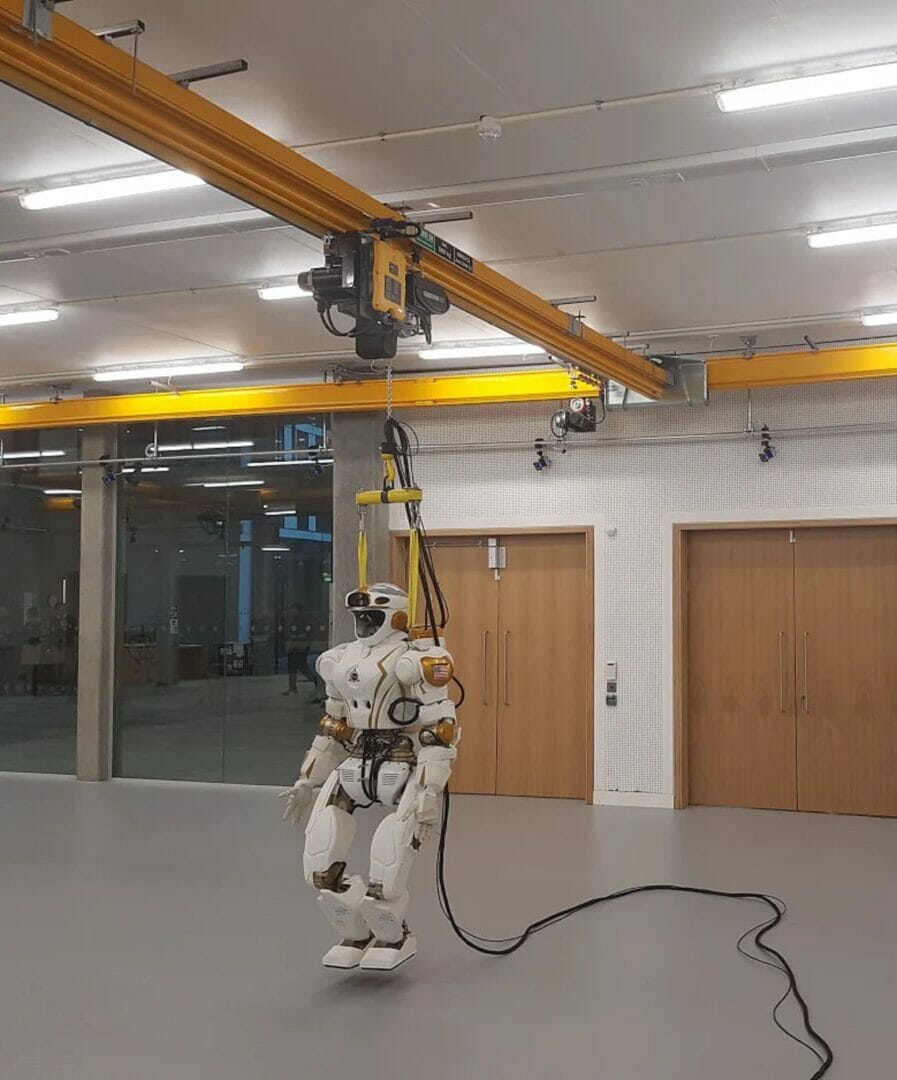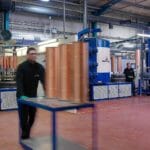VERLINDE electric hoist technology is providing an essential fall-arrest mechanism for the groundbreaking NASA Valkyrie humanoid robot being tested by researchers at the University of Edinburgh in the UK.
Standing at 1.8m tall, Vakyrie walks on two legs, like a human. However, due to the inherent added value already invested in the robot, a fall could have disastrous consequences with regard to costs and project delays. A VERLINDE electric hoist has therefore been strategically positioned above Valkyrie to prevent any damage should the robot take an unexpected tumble.
The NASA Valkyrie is one of the most advanced robots in the world, and will enable breakthroughs in humanoid control, motion planning and perception. Named Valkyrie after the female spirits of Norse mythology, experts are seeking to improve the physical and computational abilities of the 125 kg robot. It is hoped that Valkyrie will one day take part in a space mission to Mars.
From the outset, the humanoid robot has been able to walk on two legs and perform basic movements, such as holding and manipulating objects. However, PhD students and researchers from the Edinburgh Centre for Robotics are now working to help the robot make sense of its environment, and improve manoeuvrability. Work is also focusing on further developing the robot’s ability to interact closely and safely with humans and other machines. Of course, falls go hand-in-hand with this type of research, which is why the University of Edinburgh wanted to invest in a suitable safety hoist. Putting the contract out to tender, it was won by Hoist UK, distributor of VERLINDE electric hoists.
The Hoist UK team had to work in close association with the University of Edinburgh and two other key contractors on this unique project. Staff at the university had a very specific plan of what was required for Valkyrie, which involved a double-girder overhead crane running the 13.5m length of the lab space with a 6.5m span bridge. Such a design would allow Valkyrie the freedom to perform a variety of tests around the lab while permitting the robot to maintain a standing position in the event of a failure or fall.
Based on the requirements set out by the university, the Hoist UK team designed, tested and installed a radio-controlled double-girder crane system. Importantly, a VERLINDE EUROCHAIN VR5 series electric chain hoist was fitted to the 6.5m span bridge. The bridge and the hoist were rated with a safe working load of 500kg (four times the weight of the robot). As a result of being hung from the VERLINDE EUROCHAIN hoist, Valkyrie would stay upright whenever a test movement failure might cause her to fall.
Two radio controlled motorized crane bridges were fitted to the runways, one for immediate use and the second to accommodate future expansions of the project. The motorized system moves independently of Valkyrie, providing the robot with the ability to move safely around the lab. Radio control also allows the operator to move the VERLINDE hoist, giving Valkyrie free movement in the working area, from a safe distance. The system was installed to the underside of the laboratory’s existing concrete ceiling.
Vladimir Ivan, Research Associate at the University of Edinburgh, says: “Working with Valkyrie is not a case of if it falls down, but when. We are pushing the robot to its limits in a controlled environment so that it is safer and more robust when it gets deployed outside of the lab. Hoist UK helped provide a valuable safety solution to allow our ongoing testing with the robot in a safe environment. We’re really pleased with the result and look forward to working with them in the future when we expand the program further.”
Paul Jordan, Director at Hoist UK, adds: “Being a part of a program that will one day lead to people travelling to Mars was very exciting. Our team really enjoyed building a relationship with the robotics department at the University of Edinburgh. We’re very proud of the work we’ve done there, and excited to see what becomes of it in the future.”

Valkyrie is the only robot of its type in Europe, and one of just three prototypes in the world. NASA hopes to equip Valkyrie to go to Mars many years before astronauts are able to make the journey, for pre-deployment tasks and to maintain assets. Valkyrie’s human-like shape is designed to enable it to work alongside people or carry out high-risk tasks in place of people. The robot a biped for a good reason, predominantly because bipeds are adept at moving in the same space designed for humans. Such robots are very good at squeezing through narrow spaces, climbing steps and tackling variable footholds, for example.
As a project, Valkyrie is supported by the UK’s Engineering and Physical Sciences Research Council, while work is conducted at the Edinburgh Centre for Robotics as a joint initiative between the University of Edinburgh and Heriot-Watt University.








